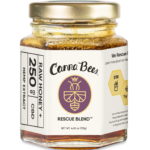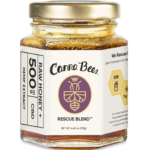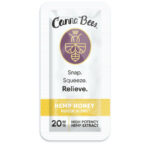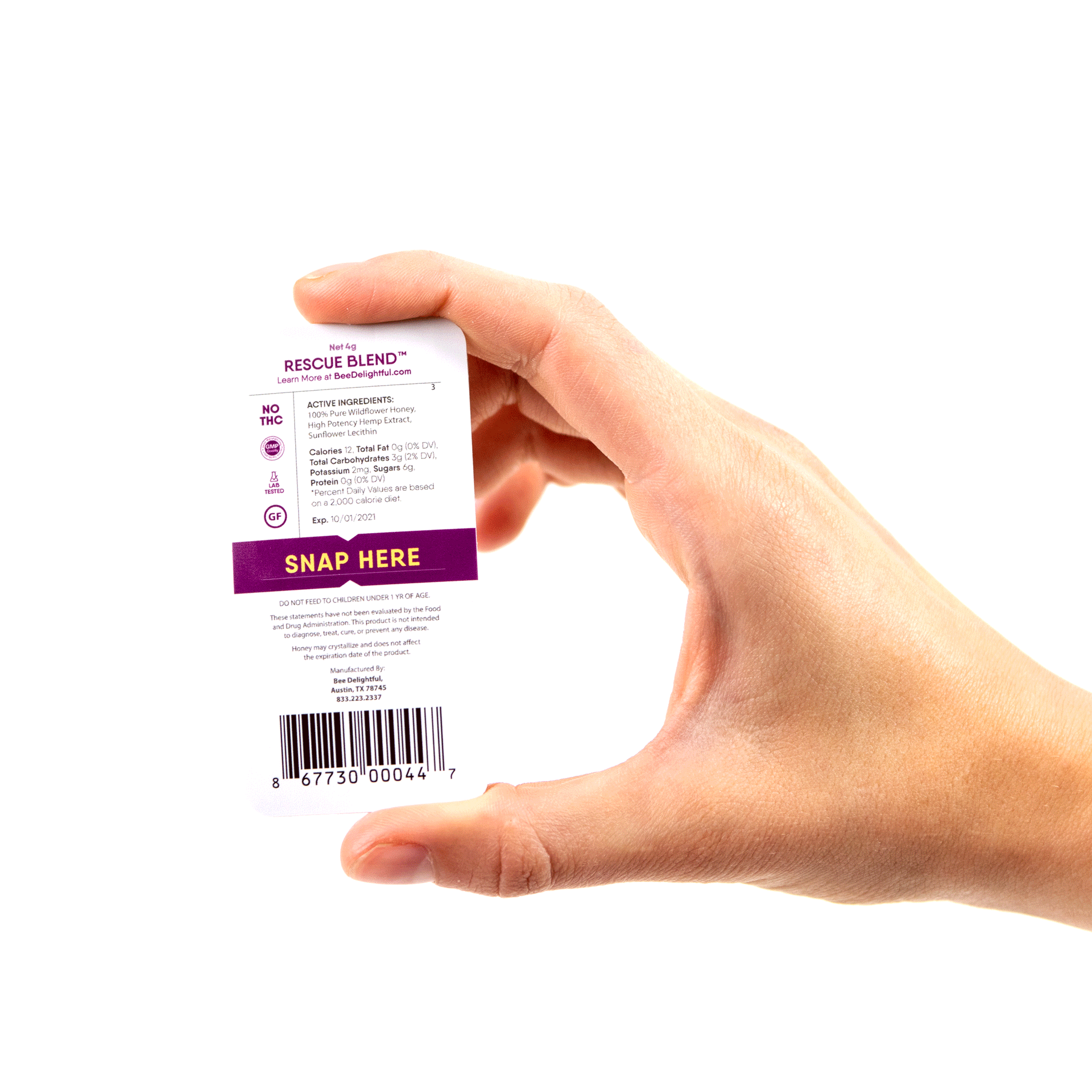2.67 million honeybee colonies can generate about 1.47 million pounds of raw honey each year in the United States. And more and more people are buying local and specialty honey for its superior color and taste.
But why does raw honey crystallize? Are you worried it may be contaminated or gone bad? Don’t worry. Crystallized honey is actually a good thing—it is a sign of high-quality honey.
Pure, raw honey will crystallize over time, which affects the color and texture of the honey. This often spooks people into thinking the honey is spoiled. But the truth is the opposite. Crystallized honey preserves the flavor and quality for a richer, more delicious honey spread.
Want the skinny on why honey changes? We’ll explain why honey crystallizes, how to return it to a smooth texture, and why you should embrace crystallized honey.
Why Does Honey Crystalize?
A super-saturated combination of glucose and fructose sugar, crystallized honey is a natural chemical process. When bees deposit the super-saturated sugar solution made of 70% sugars and 20% water, it crystallizes in the honeycomb. Crystallization usually occurs from three factors:
- Sugar Ratios
- Temperature
- Pollen
By identifying which factor caused the crystallization, you’ll realize it’s a natural process that isn’t bad for your honey.
Related: Raw Honey: The Unfiltered Truth

Sugar Ratios
Honey that is high in glucose will crystalize faster than honey that has more fructose. And the proportions of these sugars are entirely dependent on the types of plants the bees drink from to make honey.
For example, alfalfa, lavender, dandelion, and clover honey have higher percentages of glucose. This honey will crystallize faster because the glucose separates from the water and forms tiny crystals.
Where blackberry, acacia, sage, tupelo, and maple honey are higher in fructose. This honey will crystalize slower because fructose is more soluble in water and will remain fluid longer. If you prefer smoother honey, you’ll want to buy these kinds of honey.
Temperature
When honey is exposed to temperatures below 50 degrees Fahrenheit, it will crystalize. To slow crystallization, you’ll want to store your honey in a warmer environment of room temperature or higher. The warmer the honey, the longer it will stay in liquid form.
Pollen
When the bees drink from plants, they attract pollen. The pollen gets in the honey and becomes the identifier for the type of honey. As bees drink plant nectar, pollen sticks to their fuzzy bodies. Then when they make the honey, the pollen mixes into the liquid. The higher the pollen count in honey, the faster it crystallizes.
Fresh raw honey has a lot of pollen, which forms pollen grains inside the honey. Many American honey brands filter out these pollen grains so that the honey lasts longer on the grocery shelf. And by eliminating pollen grains, the honey has a more transparent, more vibrant color.
Benefits of filtered honey:
- Clear, bright, and pretty colored honey
- Can be shipped long distances
- Doesn’t crystallize as quickly
Disadvantages of filtered honey:
- Hard to determine what plants the honey came from
- Can be a blend of different kinds of honey that aren’t as high quality
- Loses some of the flavor and aroma compared to raw honey
Want a quality raw honey from the cleanest, pesticide-free, Texas Wildflower nectar? Find a retailer where you can buy Bee Delightful’s delicious raw honey products.
Related: Cooking with Canna Bees Honey Recipes
How to Return Crystallized Honey To Liquid Form
If you have crystallized honey, the easiest way to return your honey to liquid form is to heat it. The best method for heating honey is:
- Place your closed honey jar in a pot of hot water (make sure to keep below boiling).
- Remove jar after ten minutes and shake vigorously.
- Place your closed honey jar back in the pot of hot water for another ten minutes.
- Let the warm water slowly melt the crystallized honey back into a liquid.
Of course, over time, the honey will again return to its crystallized form. And the more you reheat honey it will lose its aroma and become a sugary goop. Thus, it is best only to reheat small batches of honey instead of the whole container. Then leave the rest of the honey in its crystallized form until you need more.
Microwave Only in a Pinch
Microwaving your honey is not recommended because it heats unevenly and can overheat the honey if left in too long. However, the microwave can help if you are in a hurry. Watch it carefully if you choose to use the microwave because it doesn’t take long to reheat.

Would you like raw honey infused with CBD oil? Shop Bee Delightful’s Canna Bees Rescue Blend honey.
Storing Honey
To reduce crystallization, you should store your honey in glass containers. Glass containers are not as porous as plastic and keep moisture out. Glass also reheats better than plastic. If you have a large jar of honey, you may want to separate it into several smaller glass jars. Then tightly seal the jars until you need to use one.
Why Crystallized Honey is The Best
Many people prefer crystallized honey for its flavor, and it’s easier to spread. Creamed honey is just controlled crystallization to create a velvety texture. But even if you prefer smooth liquid honey, it’s best to buy crystallized honey for its quality.
Raw, pure honey, which often crystallizes, is good for your body. Studies have shown that raw honey:
- Contains dietary antioxidants and healthy nutrients
- Reduces inflammation
- Helps with healing wounds
- Can kill harmful bacteria and fungi.
Clinical studies have also proven that raw honey can help control and treat:
- Wounds
- Diabetes
- Cancer
- Asthma
- Cardiovascular diseases
- Neurological diseases
- Gastrointestinal diseases
Proving it is a natural remedy as well as delicious food. So while it might not appear as pretty, crystallized raw honey is a natural, healthy food you should add to your diet.
Bee Delightful makes delicious honey from the cleanest, pesticide-free, Texas Wildflower nectar. Bee Delightful incorporates honey from rescued honey bee colonies that are relocated to chemical-free apiaries. They infuse their honey with organically grown, pure CBD for the combined benefits of both worlds.
Related: Why CBD + Honey? You May Be Surprised




